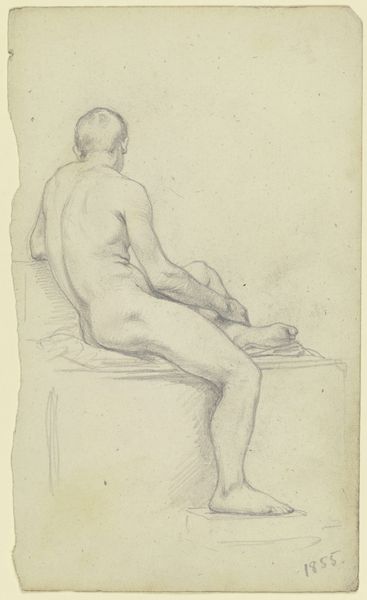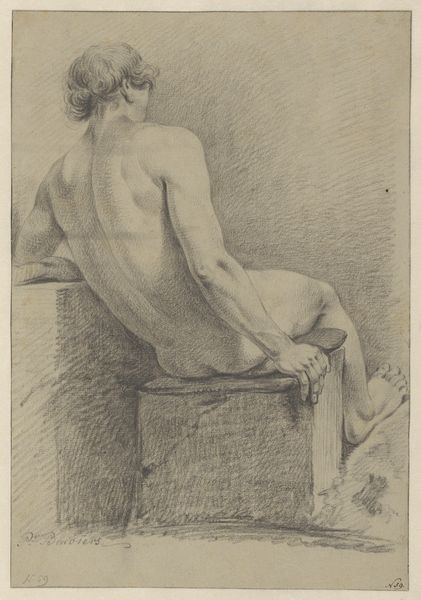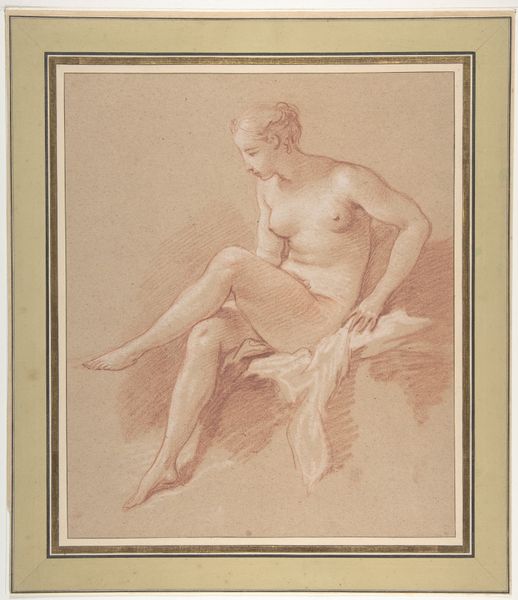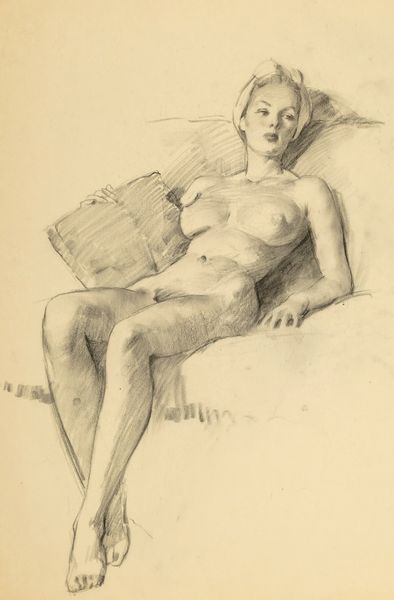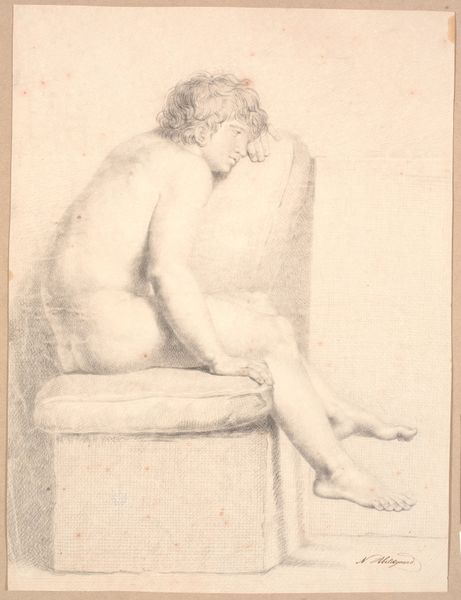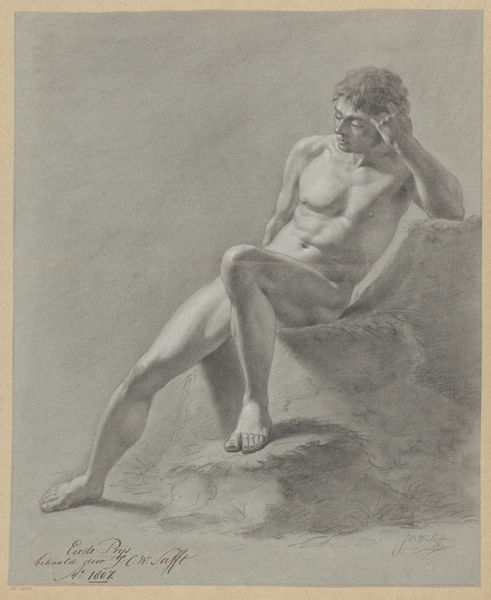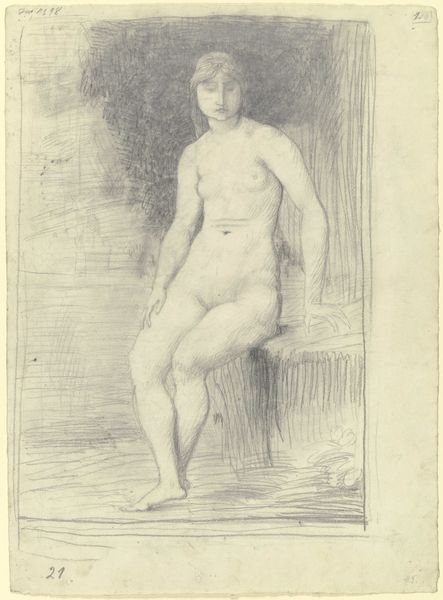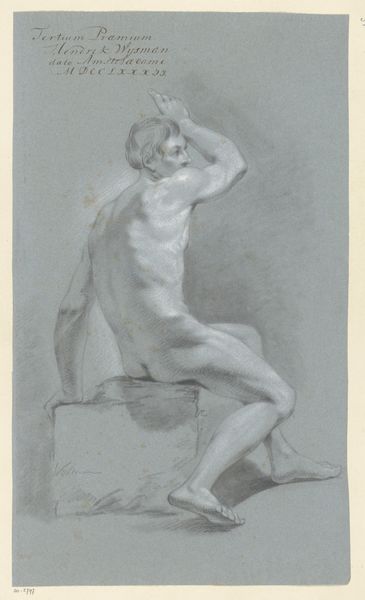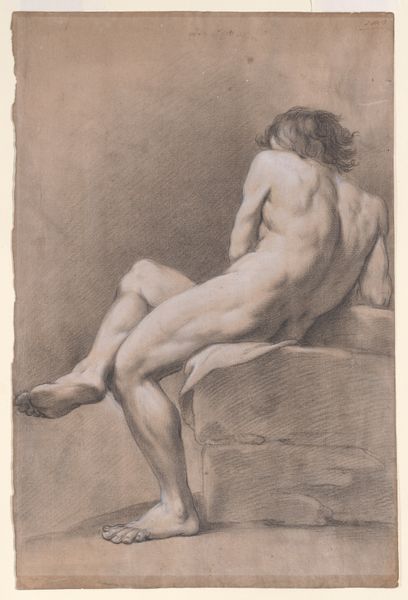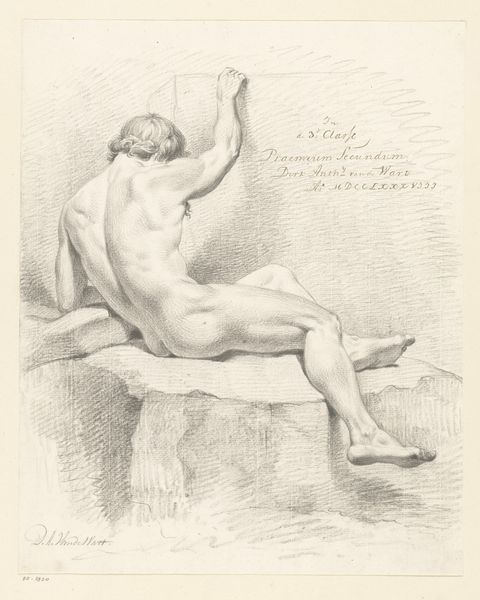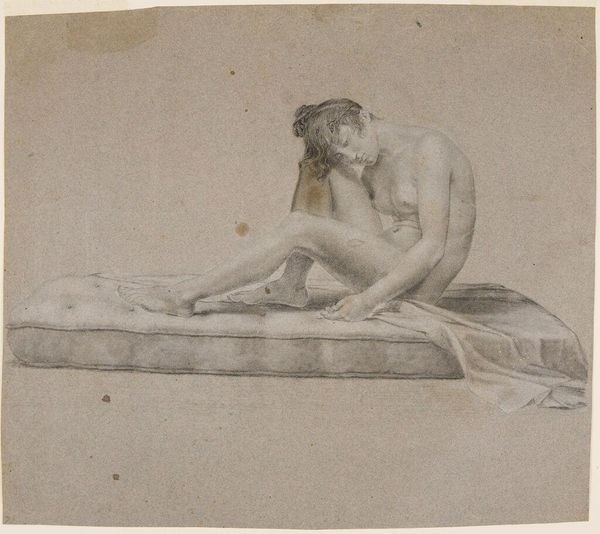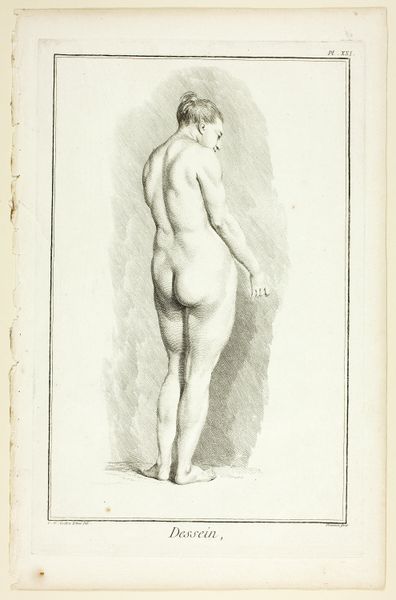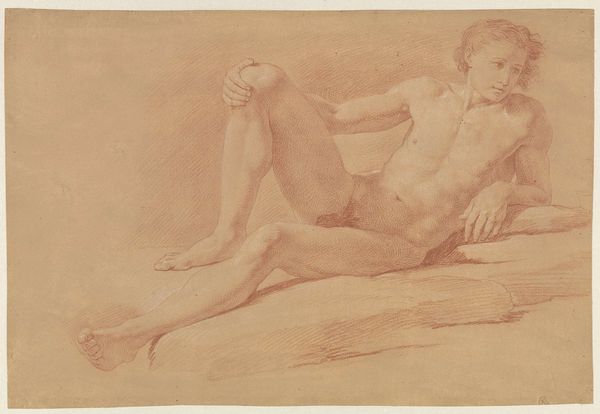
drawing, charcoal
#
portrait
#
drawing
#
neoclacissism
#
pencil sketch
#
charcoal drawing
#
pencil drawing
#
portrait drawing
#
charcoal
#
academic-art
#
nude
Dimensions: overall: 31.1 x 27.8 cm (12 1/4 x 10 15/16 in.)
Copyright: National Gallery of Art: CC0 1.0
Curator: Well, the first thing that strikes me about this drawing is the subject's posture. He seems caught between relaxation and tension. Editor: You’ve picked up on the inherent duality right away. Here we have Samuel Woodforde’s “Seated Male Nude,” a work that scholars believe was created between 1786 and 1791. What’s interesting to consider here, is the way Neoclassicism revival sought to purify art from the excesses of Baroque and Rococo periods, re-emphasizing classical principles like proportion, balance, and restraint. This is quite typical academic art with strong neoclassical stylistic influences, no? Curator: Yes, that return to classical form is certainly evident, and to see it reflected here within Woodforde’s technique of layering charcoal and pencil. Notice the commitment to rendering the ideal human form with an almost mathematical precision, capturing every muscle and sinew in painstaking detail. The play of light and shadow accentuates the contours, reinforcing that sense of three-dimensionality so vital in Neoclassical sculpture and painting. It is certainly an attempt at conveying the nude in this ideal sense! Editor: But let's not forget that such "idealized" representations often masked the complexities of lived experiences. Whose ideals were being represented and perpetuated through such images? How does the male gaze influence the way the male form has historically been portrayed in art? Curator: Of course, context is crucial. It would be fascinating to examine what models, if any, were available and accessible to Woodforde in that period. In its historical moment, a study like this would've contributed to broader intellectual and aesthetic dialogues around beauty, anatomy, and artistic skill. As for whose ideals are at play? Likely white, European ideals of beauty that we now recognise is rooted in power imbalances that reflect colonial and gender hierarchies. Editor: Exactly! Acknowledging these critical questions adds layers of meaning that would be lost if we only focused on technique or composition. These kinds of works become active participants in wider discussions about identity, representation, and power dynamics in the art world and society. Curator: I think considering those dialogues certainly invites a much more enriching discussion. It definitely prompts us to question what purpose Woodforde was fulfilling through such precise technical drawing— beyond academic exercise! Editor: And now, when we see it, we begin to also interrogate its implications and contexts. Thanks to looking beyond a basic viewing, there is room for everyone here to do that.
Comments
No comments
Be the first to comment and join the conversation on the ultimate creative platform.
